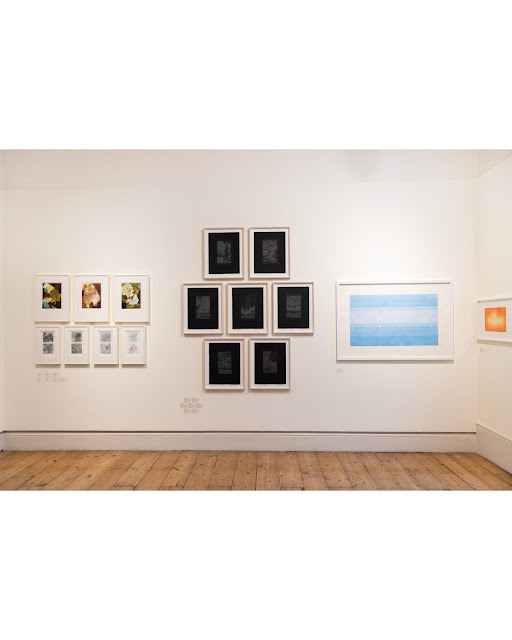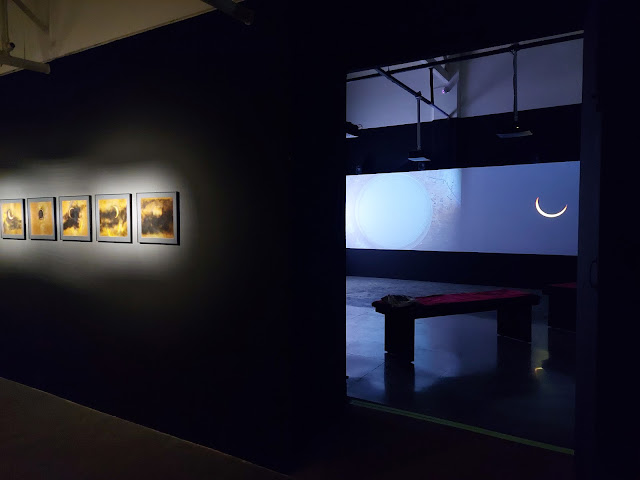FOUR MOTIONS IN FREEDOMA video art project for Bangalore Hubba, 16-25 Jan 2026 18 artists / 20 videos
Abeer Khan / Amol Patil / B V Suresh / Babu Eshwar Prasad / Bharati Kapadia / Gigi Scaria / Katyayini Gargi / L N Tallur / Mrudula Kunatharaju / Parul Gupta / Pragati Dalvi Jain / Sheeba Chhachhi / Shreya Menon / Soghra Khurasani / Sukanya Ghosh / Surekha / Swagata Bhattacharyya / Vidya Kamat
Curatorial Note This project examines various aspects of freedom through experimental video art by Indian contemporary artists. How does the notion of freedom occur in the work of the visual artist? The proposition ‘Four Motions in Freedom’ alludes to the structure of the symphony in western classical orchestra that interprets “freedom” as both a compositional structure and a political condition. The motion clips structurally presented in four sections of this curatorial schema also reference the four pillars of democracy and the four seasons that broadly occur during the cyclic period of a year - both that see a wave of change in our present politics and climate. These four motions — fast and slow, balanced and improvisatory — create the polyphonic field in which democracy breathes. Freedom here is not a single melody but a composition in flux, sustained by dialogue, friction, and repetition. Like any living music, its power lies not in resolution but in the continual act of listening, responding, and renewal.
The four vectors of freedom, explored through four video-sets here are:
a. BODY
This set explores works that look at the body as the first site of negotiation of freedom. The artists explore gestures of vulnerability or pleasure within the gendered, ritualised or surveilled body. Largely speaking of the feminine struggles, the section brings voices that claim for presence or autonomy and ultimately agency for the suppressed body.
b. TENSION
Oscillating between danger and play, this section highlights the tensions of exercising freedom. The works present contrasting ways of staging and dealing with one’s internal conflict. Freedom here is demonstrated in acts of release and restraint. When restrained, the works offer us new questions in stretching further the geography of the trapped mind.
c. ROUTINE
The works in this set present histories and actions that are silenced in the everyday acts of repetition. Some not only reveal the routines in which our lives unendingly circulate, but also offer us alternative ways in which we (may) begin to creatively maneuver them. They settle and unsettle the timespaces we inhabit, ultimately hinting at the quiet subversion of the mundane everyday.
d. IDEOLOGY
In this section, artists pose questions to the actions of ideological regimes that have led us to reflect on the political landscapes that the world is confronted with. The works interrogate different aspects of the violence of data, democratic ideals and distilled ethics and its impact on communities and societies.
VIDEO LIST
SCREEN – I BODY 5 videos Total: 14 mins 19 secs
Mrudula Kunatharaju TRY TRY TRY 2.30
Mrudula Kunatharaju STILL SMALL VOICE 1.40
Soghra Khurasani I WANT TO LIVE 1.01
Soghra Khurasani DO THIS, DO THAT 3.18
Vidya Kamat WISH I HAD STAYED HOME 5.50
SCREEN – II TENSION 5 videos Total: 20 mins 30 secs
Parul Gupta HAIRFALL 5.48
Surekha LOC 2.31
Pragati Dalvi Jain BREAKING THE IMAGE 6.59
Bharati Kapadia PLAYING WITH DANGER 2.12
Sukanya Ghosh ISOSCELES FOREST 03.00
SCREEN – III ROUTINE 5 videos Total: 17 mins 46 secs
Abeer Khan CHILD LOCK 2.12
Sheba Chhachhi MOVING THE CITY 6.58
Katyayini Gargi THE REITERATORS 2.05
L N Tallur INTERFERENCE 4.00
Amol Patil REST 02.31
SCREEN – IV IDEOLOGY 5 videos Total: 21 mins 19 secs
Shreya Menon RABBIT HOLE 1.41
Gigi Scaria POLITICAL FREEDOM 3.31
B. V. Suresh CANES OF WRATH 3.17
Swagata Bhattacharyya ROAD SCENE 4.18
Babu Eshwar Prasad WALK 8.32
Read full descriptions
here
epilogue
As we complete fifty years since the Emergency of 1975, and while the world sways to the extreme political currents across the world, to ask about freedom is more pertinent now than ever. The global reconfigurations around us affect us at various scales of existence - both the self and the world, the body and action. How does the notion of freedom occur in the work of the visual artist? Through what routes does the artist lead us into thinking about our social, political and historical entrappings? Lastly, how could these be mobilised into ways of imagining and actioning for a more agile everyday?
Located in the Central Business district of the city of Bengaluru, the erstwhile Bangalore Central Jail, now the Freedom Park becomes a historical and phenomenological condition for this artistic intersection. The site has held several opposition leaders including poet prime minister Atal Bihari Vajpayee and L K Advani when the state of emergency was proclaimed in India in 1975. More recently, it was the ground for hosting the India Against Corruption campaign supporting Anna Hazare’s indefinite fast for governmental action that led to the enactment of the Lok Pal Bill that extended the people of India, the will to ask questions freely to power. Opened in 2008, a part of this site has also been allotted for public protests and free political expression. As viewers encounter the show in the prison cells of the Freedom Park in Bangalore, ‘Four motions in Freedom’ invites contemplation on the histories and futures of our very artistic and collective freedom.



























































